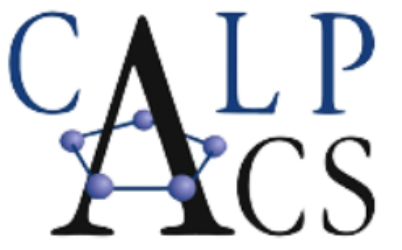You are cordially invited to attend the late convocation of the CALPACS annual luncheon honoring the local section’s 50-year ACS members. The 2013 honorees are
Dr. Philip S. Bailey
Dr. Clifford A. Bunton
Dr. Peder J. Estrup
Dr. Norvell J. Nelson
Dr. Fred Wudl
Dr. Galen Stucky
and 60-year member Dr. George Taborsky.
As part of the event, Professor Erik Johansson of Portland State University will deliver a lecture on the history of iron pyrite and the renewed interest in its utility in renewable energy applications.
The abstract for the lecture appears below, and it can be downloaded as a pdf file here.
A buffet lunch with main courses of beef bourgignon and shrimp fettuccine will be served. Vegetarian option is available upon request. Please use the form below to make your reservation and any special requests. Kindly click on the “Contact” link on this page to ask questions.
Date: Saturday, March 8, 2014
Time: Noon
Speaker: Erik Johansson, Portland State
Place: Le Café Stella
3302 McCaw Ave
Santa Barbara, CA 93105 (Google Map)
(805) 569-7698
Cost: $20, $10 for students
Schedule:
12:00 Arrival and check-in, cash bar
12:20 Buffet Open / Lunch Begins
1:00 Dessert
1:15 Presentation
3:00 Event Conclusion
Registration for this event is now closed.
Chemistry and Energetics of Iron Pyrite (FeS2) Surfaces
Erik Johansson, Ph. D.
Assistant Professor of Chemistry, Portland State University
The realization of cost-competitive solar-to-electrical energy conversion will have a transformative impact on a wide range of important issues ranging from the environment to national security. FeS2 has great potential, but it is currently not a realistic component of cost-efficient solar energy conversion devices.
FeS2 was in use over 100 years ago as a crucial component in crystal radios but is currently only used for this purpose by antique-radio hobbyists and for educational purposes. It showed great promise as a solar energy conversion material when near-unity photon-to-electron conversion efficiency was demonstrated in 1986 using synthetic single crystal FeS2/liquid junctions. However, the low (approximately 200 mV) open-circuit potential (Voc) limited performance and was ascribed to deleterious surface states. It is now thought that Fermi-level pinning and other performance limitations can arise from bulk and interfacial defects.
This presentation will describe the history of the field up to the current state of the art, what challenges are facing researchers trying to realize pyrite as a solar-energy conversion material, what the Johansson lab is doing specifically, and the potential impact of our work.
Erik Johansson was born in the middle of Sweden (approximately the same latitude as Mount McKinley, Alaska). He is a third generation chemist who completed his undergraduate studies at KTH, the Royal Institute of Technology, in Stockholm, Sweden. He completed his dissertation on electron transfer processes in sol-gel materials under the supervision of Professor Jeffrey Zink at UCLA, and continued postdoctoral research in semiconductor electrochemistry and surface properties with Professor Nathan Lewis at CalTech. As an independent researcher at Portland State University, he is continuing studies related to renewable energy technologies with an emphasis on surface phenomena. He is also the manager of the PGE Foundation Renewable Energy Research Laboratory.
